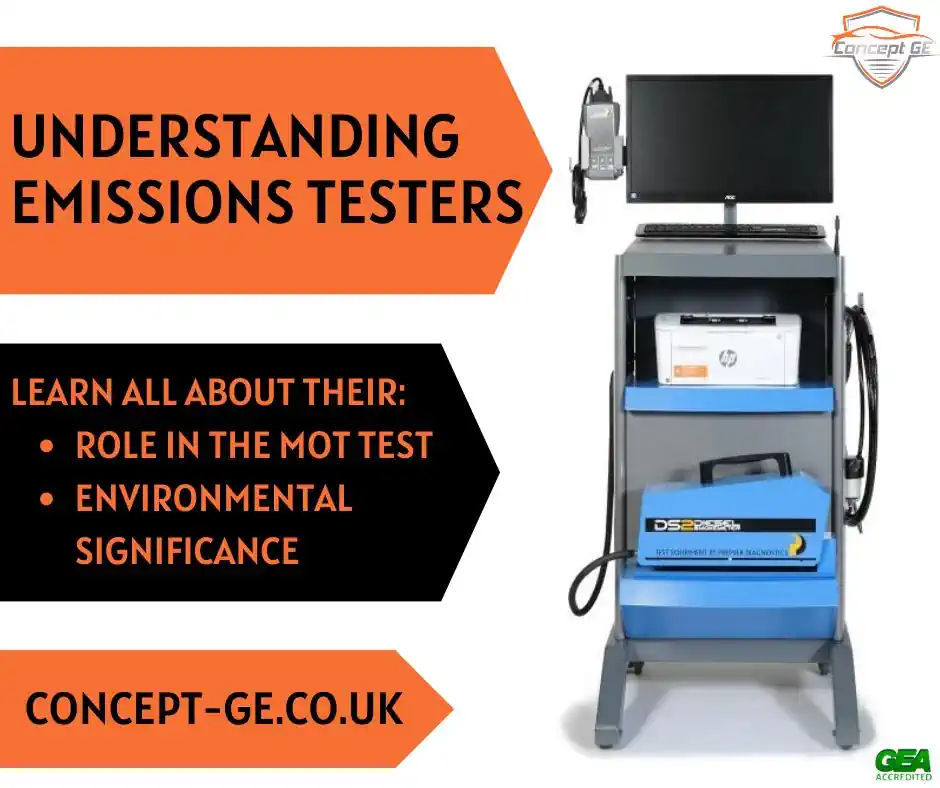A Guide to Emissions Testers in Ensuring Vehicle Environmental Compliance
Emissions testers, also referred to as exhaust gas analysers or gas and smoke emissions analysers, play a crucial role in maintaining air quality and ensuring vehicles meet environmental regulations. In the United Kingdom, these devices are widely used by garages and are an integral part of the Ministry of Transport (MOT) test.
The Role of Emissions Testers in M.O.T. Tests
The Department for Transport stipulates that every vehicle over three years old that operates on UK roads must have passed an M.O.T. test. The goal is to ascertain that vehicles are safe to drive, adequately maintained and meet the minimum environmental standards. One of the rigorous tests performed as part of the M.O.T. is the Emissions Test. Without the correct pollutant emissions level as a basic requirement, a vehicle fails the M.O.T. Immediately, earning its place off the road until rectified. The emissions tester, therefore, becomes the crucial tool used to determine if a vehicle’s emissions fall within acceptable limits. Emissions testers analyse the gaseous composition of an engine’s exhaust, namely carbon monoxide (CO), hydrocarbons (HC), and nitrogen oxides (NOx). Diesel vehicles will also undergo a smoke test to ensure the particulate matter (PM) is within boundaries. By measuring these substances, the tester determines whether the vehicle’s engine operates efficiently and complies with environmental protection standards set in the UK and internationally.
The Need for Emissions Testing
The growing concern over air pollution and its adverse effects on public health and the environment has led to the implementation of strict emission regulations for vehicles. Harmful pollutants such as nitrogen oxides (NOx), carbon monoxide (CO), hydrocarbons (HC), and particulate matter (PM) are emitted from vehicle exhausts, contributing to smog, respiratory diseases, and global warming. To mitigate these issues, governments worldwide, including the UK, have set stringent emission standards for vehicles.
Components and Operation of Emissions Testers
Although there are variations in the design, most emissions testers typically consist of a mobile cabinet, containing some or all of the following components:
- Computer: Screen, Keyboard and Mouse
- Emissions Analyser software: MOT-compliant and newer versions will be connected via the internet to DVSA
- Printer: for printing gas analysis reports
- Probe connected to a smoke head: to sample the diesel exhaust gases
- Probe connected to a gas analyser: to sample the petrol exhaust gases
- Oil temperature probe: to monitor the oil temperature of the engine
- OBD device: to obtain engine speed measurement readings directly from the vehicle
The functioning essence of an emissions tester lies in its sophisticated detection mechanisms. These typically rely on infrared (IR) absorption and electrochemical techniques to quantify CO, CO2, and HC levels in the analysed gases. Simultaneously, ultraviolet (UV) detection methods are utilised to measure NOx levels. Particulates in diesel engine exhausts, and smoke opacity, are usually monitored using optical techniques.

Petrol and Diesel Emissions Analyser with Probe coiled on the side of the cabinet
The Operation of Emissions Testers
Emissions testers operate based on the principle of analysing the gases present in the exhaust stream of a vehicle. The process involves the following steps:
- Sample Collection: A sample of exhaust gas is extracted from the vehicle’s exhaust pipe using a probe. This sample is then transported to the emissions tester for analysis.
- Gas Analysis: The emissions tester analyses the sample for pollutants such as NOx, CO, HC, and CO2. Modern analysers use advanced technologies like infrared spectroscopy and electrochemical sensors to detect and quantify these gases accurately.
- Data Interpretation: The emissions tester generates a detailed report indicating the levels of different pollutants in the exhaust gases. Technicians can then assess whether the vehicle meets the required emission standards.
- Submission to DVSA: either manually entering the data into the MOT Testing Service (MTS) system, or if the emissions testers are connected, this will be automatically shared with the DVSA as part of this test.
- Adjustment or calibration: Depending on the type and severity of the emissions readings, this may indicate an issue with the engine, fuel mixture or even a faulty exhaust pipe or catalytic converter which will need to be resolved before re-testing.
- Re-testing: following the resolution of the emissions issue on the vehicle, the emissions test can be repeated to ensure that the issues have been resolved
Importance of Emissions Testing
The role emissions testers play in the M.O.T. test and the wider automotive industry is really significant. As it stands, the UK has resolute commitments to environmental causes and climate change mitigation efforts. Robust emissions testing is key in implementing and maintaining these environmental goals. Catching high-emission vehicles assists in identifying and rectifying inefficient burning vehicles and potential faults before they can harm the environment. More than just a tick-box for the M.O.T. test, it’s about contributing to the ‘green’ movement for cleaner and safer vehicles on UK roads. These devices also enable mechanics to identify underlying mechanical faults. Most commonly, certain emissions levels can hint at defective or worn engine components, ineffective fuel management, and catalytic converter failures. As such, mechanics can ensure that drivers are not only meeting regulatory requirements but also maintaining an effective, fuel-efficient running of their vehicles.
Regular Maintenance and Calibration of Emissions Testers
Regular maintenance and calibration of emissions testers are essential to ensure accurate and reliable results. Calibration involves comparing the analyser’s readings with known calibration gases to verify their accuracy. If the readings from the gas & smoke analysers are inaccurate then the MOT testing centre could fail an audit or inspection by DVSA, so call Concept Garage Equipment to have your emissions testers calibrated regularly.


